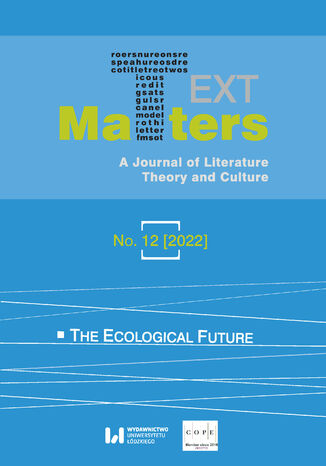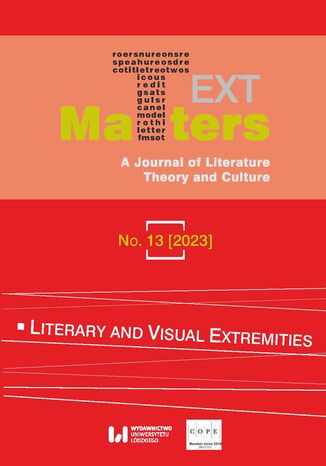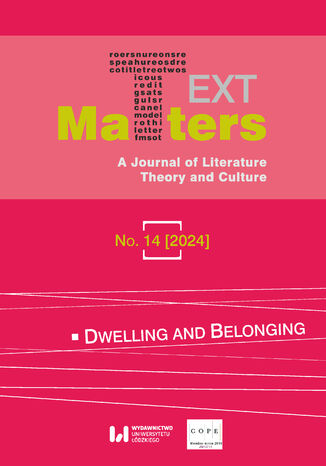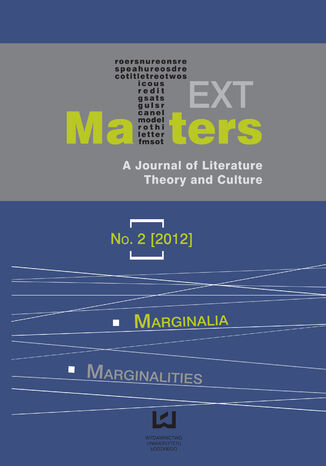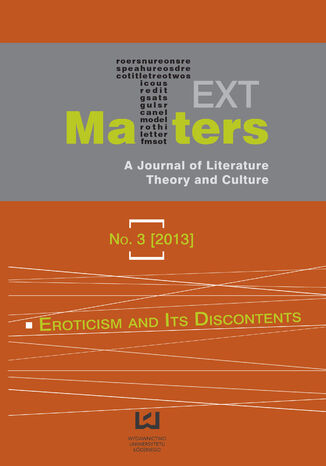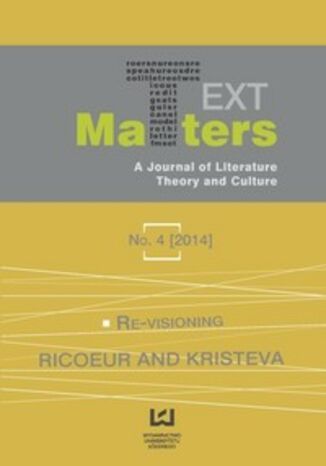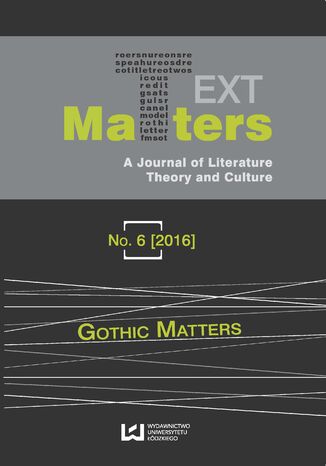Kategorie
Ebooki
-
Biznes i ekonomia
- Bitcoin
- Bizneswoman
- Coaching
- Controlling
- E-biznes
- Ekonomia
- Finanse
- Giełda i inwestycje
- Kompetencje osobiste
- Komputer w biurze
- Komunikacja i negocjacje
- Mała firma
- Marketing
- Motywacja
- Multimedialne szkolenia
- Nieruchomości
- Perswazja i NLP
- Podatki
- Polityka społeczna
- Poradniki
- Prezentacje
- Przywództwo
- Public Relation
- Raporty, analizy
- Sekret
- Social Media
- Sprzedaż
- Start-up
- Twoja kariera
- Zarządzanie
- Zarządzanie projektami
- Zasoby ludzkie (HR)
-
Dla dzieci
-
Dla młodzieży
-
Edukacja
-
Encyklopedie, słowniki
-
E-prasa
- Architektura i wnętrza
- BHP
- Biznes i Ekonomia
- Dom i ogród
- E-Biznes
- Ekonomia i finanse
- Ezoteryka
- Finanse
- Finanse osobiste
- Firma
- Fotografia
- Informatyka
- Kadry i płace
- Kobieca
- Komputery, Excel
- Księgowość
- Kultura i literatura
- Naukowe i akademickie
- Ochrona środowiska
- Opiniotwórcze
- Oświata
- Podatki
- Podróże
- Psychologia
- Religia
- Rolnictwo
- Rynek książki i prasy
- Transport i Spedycja
- Zdrowie i uroda
-
Historia
-
Informatyka
- Aplikacje biurowe
- Bazy danych
- Bioinformatyka
- Biznes IT
- CAD/CAM
- Digital Lifestyle
- DTP
- Elektronika
- Fotografia cyfrowa
- Grafika komputerowa
- Gry
- Hacking
- Hardware
- IT w ekonomii
- Pakiety naukowe
- Podręczniki szkolne
- Podstawy komputera
- Programowanie
- Programowanie mobilne
- Serwery internetowe
- Sieci komputerowe
- Start-up
- Systemy operacyjne
- Sztuczna inteligencja
- Technologia dla dzieci
- Webmasterstwo
-
Inne
-
Języki obce
-
Kultura i sztuka
-
Lektury szkolne
-
Literatura
- Antologie
- Ballada
- Biografie i autobiografie
- Dla dorosłych
- Dramat
- Dzienniki, pamiętniki, listy
- Epos, epopeja
- Esej
- Fantastyka i science-fiction
- Felietony
- Fikcja
- Humor, satyra
- Inne
- Klasyczna
- Kryminał
- Literatura faktu
- Literatura piękna
- Mity i legendy
- Nobliści
- Nowele
- Obyczajowa
- Okultyzm i magia
- Opowiadania
- Pamiętniki
- Podróże
- Poemat
- Poezja
- Polityka
- Popularnonaukowa
- Powieść
- Powieść historyczna
- Proza
- Przygodowa
- Publicystyka
- Reportaż
- Romans i literatura obyczajowa
- Sensacja
- Thriller, Horror
- Wywiady i wspomnienia
-
Nauki przyrodnicze
-
Nauki społeczne
-
Podręczniki szkolne
-
Popularnonaukowe i akademickie
- Archeologia
- Bibliotekoznawstwo
- Filmoznawstwo
- Filologia
- Filologia polska
- Filozofia
- Finanse i bankowość
- Geografia
- Gospodarka
- Handel. Gospodarka światowa
- Historia i archeologia
- Historia sztuki i architektury
- Kulturoznawstwo
- Lingwistyka
- Literaturoznawstwo
- Logistyka
- Matematyka
- Medycyna
- Nauki humanistyczne
- Pedagogika
- Pomoce naukowe
- Popularnonaukowa
- Pozostałe
- Psychologia
- Socjologia
- Teatrologia
- Teologia
- Teorie i nauki ekonomiczne
- Transport i spedycja
- Wychowanie fizyczne
- Zarządzanie i marketing
-
Poradniki
-
Poradniki do gier
-
Poradniki zawodowe i specjalistyczne
-
Prawo
- BHP
- Historia
- Kodeks drogowy. Prawo jazdy
- Nauki prawne
- Ochrona zdrowia
- Ogólne, kompendium wiedzy
- Podręczniki akademickie
- Pozostałe
- Prawo budowlane i lokalowe
- Prawo cywilne
- Prawo finansowe
- Prawo gospodarcze
- Prawo gospodarcze i handlowe
- Prawo karne
- Prawo karne. Przestępstwa karne. Kryminologia
- Prawo międzynarodowe
- Prawo międzynarodowe i zagraniczne
- Prawo ochrony zdrowia
- Prawo oświatowe
- Prawo podatkowe
- Prawo pracy i ubezpieczeń społecznych
- Prawo publiczne, konstytucyjne i administracyjne
- Prawo rodzinne i opiekuńcze
- Prawo rolne
- Prawo socjalne, prawo pracy
- Prawo Unii Europejskiej
- Przemysł
- Rolne i ochrona środowiska
- Słowniki i encyklopedie
- Zamówienia publiczne
- Zarządzanie
-
Przewodniki i podróże
- Afryka
- Albumy
- Ameryka Południowa
- Ameryka Środkowa i Północna
- Australia, Nowa Zelandia, Oceania
- Austria
- Azja
- Bałkany
- Bliski Wschód
- Bułgaria
- Chiny
- Chorwacja
- Czechy
- Dania
- Egipt
- Estonia
- Europa
- Francja
- Góry
- Grecja
- Hiszpania
- Holandia
- Islandia
- Litwa
- Łotwa
- Mapy, Plany miast, Atlasy
- Miniprzewodniki
- Niemcy
- Norwegia
- Podróże aktywne
- Polska
- Portugalia
- Pozostałe
- Przewodniki po hotelach i restauracjach
- Rosja
- Rumunia
- Słowacja
- Słowenia
- Szwajcaria
- Szwecja
- Świat
- Turcja
- Ukraina
- Węgry
- Wielka Brytania
- Włochy
-
Psychologia
- Filozofie życiowe
- Kompetencje psychospołeczne
- Komunikacja międzyludzka
- Mindfulness
- Ogólne
- Perswazja i NLP
- Psychologia akademicka
- Psychologia duszy i umysłu
- Psychologia pracy
- Relacje i związki
- Rodzicielstwo i psychologia dziecka
- Rozwiązywanie problemów
- Rozwój intelektualny
- Sekret
- Seksualność
- Uwodzenie
- Wygląd i wizerunek
- Życiowe filozofie
-
Religia
-
Sport, fitness, diety
-
Technika i mechanika
Audiobooki
-
Biznes i ekonomia
- Bitcoin
- Bizneswoman
- Coaching
- Controlling
- E-biznes
- Ekonomia
- Finanse
- Giełda i inwestycje
- Kompetencje osobiste
- Komunikacja i negocjacje
- Mała firma
- Marketing
- Motywacja
- Nieruchomości
- Perswazja i NLP
- Podatki
- Polityka społeczna
- Poradniki
- Prezentacje
- Przywództwo
- Public Relation
- Sekret
- Social Media
- Sprzedaż
- Start-up
- Twoja kariera
- Zarządzanie
- Zarządzanie projektami
- Zasoby ludzkie (HR)
-
Dla dzieci
-
Dla młodzieży
-
Edukacja
-
Encyklopedie, słowniki
-
E-prasa
-
Historia
-
Informatyka
-
Inne
-
Języki obce
-
Kultura i sztuka
-
Lektury szkolne
-
Literatura
- Antologie
- Ballada
- Biografie i autobiografie
- Dla dorosłych
- Dramat
- Dzienniki, pamiętniki, listy
- Epos, epopeja
- Esej
- Fantastyka i science-fiction
- Felietony
- Fikcja
- Humor, satyra
- Inne
- Klasyczna
- Kryminał
- Literatura faktu
- Literatura piękna
- Mity i legendy
- Nobliści
- Nowele
- Obyczajowa
- Okultyzm i magia
- Opowiadania
- Pamiętniki
- Podróże
- Poezja
- Polityka
- Popularnonaukowa
- Powieść
- Powieść historyczna
- Proza
- Przygodowa
- Publicystyka
- Reportaż
- Romans i literatura obyczajowa
- Sensacja
- Thriller, Horror
- Wywiady i wspomnienia
-
Nauki przyrodnicze
-
Nauki społeczne
-
Popularnonaukowe i akademickie
-
Poradniki
-
Poradniki zawodowe i specjalistyczne
-
Prawo
-
Przewodniki i podróże
-
Psychologia
- Filozofie życiowe
- Komunikacja międzyludzka
- Mindfulness
- Ogólne
- Perswazja i NLP
- Psychologia akademicka
- Psychologia duszy i umysłu
- Psychologia pracy
- Relacje i związki
- Rodzicielstwo i psychologia dziecka
- Rozwiązywanie problemów
- Rozwój intelektualny
- Sekret
- Seksualność
- Uwodzenie
- Wygląd i wizerunek
- Życiowe filozofie
-
Religia
-
Sport, fitness, diety
-
Technika i mechanika
Kursy video
-
Bazy danych
-
Big Data
-
Biznes, ekonomia i marketing
-
Cyberbezpieczeństwo
-
Data Science
-
DevOps
-
Dla dzieci
-
Elektronika
-
Grafika/Wideo/CAX
-
Gry
-
Microsoft Office
-
Narzędzia programistyczne
-
Programowanie
-
Rozwój osobisty
-
Sieci komputerowe
-
Systemy operacyjne
-
Testowanie oprogramowania
-
Urządzenia mobilne
-
UX/UI
-
Web development
-
Zarządzanie
Podcasty
- Ebooki
- E-prasa
E-prasa
Text Matters: A Journal of Literature, Theory and Culture, No. 12 (2022)
Agnieszka Soltysik Monnet, Christian Arnsperger
Issue 12 (2022) of Text Matters, titled The Ecological Future, edited by Agnieszka Soltysik Monnet and Christian Arnsperger of the University of Lausanne, Switzerland, deals with the temporal aspect of the ecological challenge facing humanity. Time is a central category in thinking about the environment because of our focus on the planet's possible futures as well as our awareness of how quickly the climate is changing and how fast we must react if we want to prevent a catastrophe. These issues are addressed by the volume's main section, containing scholarly papers, excerpts from two books by William deBuys, a fictional narrative by John Michael Greer, a screenplay by Elizabeth Watson, and conversations with the three authors. The scholarly articles discuss the work of writers such as J. G. Ballard, Imbolo Mbue, Cherie Dimaline, Louise Erdrich, Gary Snyder, Kenneth White, Richard Powers, and M. R. Carey, as well as graphic novels, photography, painting, and cultural practices. Their main points of focus are re-flected by the titles of the five sub-sections into which they have been divided: "Tempo-rality and Deep Time," "Eco-Anxiety and Anthropocene Nostalgia," "Indigenous Pasts, Presents and Futures," "Interconnectivity and Animacy," and "Ecotopia and Eco-Futurism." The ecological futures imagined in these interventions require creating new narratives of modernity, often, as it turns out, ones inspired by Indigenous attitudes to-wards the biosphere. As the ecological is often closely linked to different approaches towards the body, the subsequent section, titled "BODY/TEXT/IMAGE," contains pa-pers discussing several works of literature as well as visual and performing arts, sharing the theme of corporeality and embodiment. The volume is concluded by a review of a scholarly volume on Shakespeare and an interview with Philip Terry.
Text Matters: A Journal of Literature, Theory and Culture, No. 13 (2023)
Issue 13 (2023), entitled "Literary and Visual Extremities" and edited by Małgorzata Myk and Mark Tardi, explores the notion of extremity in diverse types of artistic practice, from strictly literary to visual/performative. Eleven scholarly texts, collected in five subsections ("Extreme Borders," "Extreme Ecologies," "Limits," "Extreme Forms," and "Memory in Extremis") deal with the works by Lara Haddad, Divya Victor, Allison Cobb, Adam Dickinson, Jorie Graham, Clark Coolidge, Barbara Guest, Susan Howe, Emmett Williams, Roman Stańczak, Dennis Cooper, Kazuo Ishiguro, and Jordan Harrison. The volume continues with the "Artistic Collaborations" section, supervised by Justyna Stępień and Joanna Kosmalska. It consists of six articles that discuss Matthew Barney's Redoubt, Colum McCann's Apeirogon, Richard A. Carter's Waveform, the notion of multilingualism in Polish migrant theatre, and, finally, the Spirals artistic project. The next section, "Grief/Trauma/Social Unrest," centers on the portrayal of mourning in selected US-American TV series, grief memoirs, the depiction of toxic masculinity in Teddy Wayne's Loner, and representations of working-class communities in British cinema. The final section, "Continuities," examines literature concerned with the ecological future, Harry Styles's music videos, the notion of abjection in Richard Matheson's I Am Legend, and nation-building in India in the early 20th century, as demonstrated by the press from this period. Additionally, issue 13 contains two reviews: of Cormac McCarthy's The Passenger and Caroline Young's Crazy Old Ladies: The Story of Hag Horror.
Text Matters: A Journal of Literature, Theory and Culture, No. 14 (2024)
Małgorzata Hołda, Ramsey Eric Ramsey
Issue 14 (2024) of Text Matters centers on the intertwined concepts of dwelling and belonging, exploring their complexities and dimensions within literature and culture. The editors, Małgorzata Hołda and Ramsey Eric Ramsey, introduce these themes as fundamental to the human experience of being-in-the-world, encompassing a vast array of human concerns and historical situatedness. The nineteen essays, grouped in five broad sections, examine topics as varied as disputes between Arendt and Heidegger, the intertwined nature of "belonging and longing" in the philosophies of Renaud Barbaras and Jean-Luc Marion, the intricate relationships between dwelling and identity, particularly within urban and environmentally stressed contexts, the retrieval of memories and the redefinition of personal identity in relation to urban space and altered surroundings, dwelling in urban and environmentally endangered areas, the entanglement of urban subjectivity with non-human elements, and seeking models of collective memory and dwelling that move beyond anthropocentric concepts. The main section also covers various modes of belonging, including the concept of home for digital objects and their interactions within online environments, regional identity in poetry, the experience of hate crime and reclaiming belonging, and the use of art and literature to analyze memory, absence, and socio-political critique. What follows is the "(More-Than-Human) Intersections, (More-Than-Generic) Liminalities" section that gathers seven scholarly texts discussing the representation of animal revolts in literature, transgression(s) in Sheri S. Tepper's The Gate to Women's Country, depiction of post-apartheid white identity in Die Antwoord's music videos, the horror elements in Robert Eggers's The Lighthouse, the ecocritical reading of Thomas Hardy's The Woodlanders, the concepts of disnarration and denarration in Eugene O'Neill's The Iceman Cometh, and innovation in the poetry by Charles Bernstein and Andrzej Sosnowski.
Text Matters: A Journal of Literature, Theory and Culture, No. 2 (2012)
The theme of issue 2 (2012) is "Marginalia/Marginalities" explored across literature, theatre, film, and cultural theory. It opens with a conversation between Dorota Filipczak and film director Krzysztof Zanussi, addressing cultural exchange and the challenges faced by European cinema. The section "Marginal Matters in Theatre and Film" examines how actors and marginalized spaces have been historically portrayed. Its contributors discuss 18th-century biographies that reframe actors as cultural agents, Samuel Beckett's self-translation of Waiting for Godot, nature as a marginal force in Terrence Malick's The Thin Red Line, and the rise of The Big Lebowski from cult obscurity to cultural significance. The authors in the "Margins in Fiction, Poetry and Literary Theory" section write about revisiting the Gothic genre, linking marginality to terror and the fantastic in fin de siecle fiction, Bruno Schulz's ex-libris art, J. H. Prynne's poetry, Edward Said's oeuvre, the Polish reception of Thomas Keneally, and the role of false quotations in Jim Crace's Arcadia. The final section, "Marginalized Identities," focuses on individuals in conflict with dominant cultural or social norms. Topics include Ira Daniel Aldridge's biography, gay masculinities in "Brokeback Mountain," female marginalization in dystopian fiction, and intercultural identity in works by Alice Walker, Louise Erdrich, Daniel Chacon, Michel Tournier, Monica Ali, Jhumpa Lahiri, and Aravind Adiga. The issue concludes with three reviews (of The Making of London: London in Contemporary Literature by Sebastian Groes; Simon Glendinning's Derrida; and Native Authenticity: Transnational Perspectives on Native American Literary Studies, edited by Deborah L. Madsen), as well as two interviews: between Fadia Faqir and Maria Assif, and Norman Ravvin and Krzysztof Majer.
Text Matters: A Journal of Literature, Theory and Culture, No. 3 (2013)
Issue 3 (2013) of Text Matters, entitled Eroticism and Its Discontents and edited by Professor Jadwiga Uchman (University of Lodz), is a collection of essays that concentrate on representations of eroticism in literature and film. The main section is divided into two subsections, the first of which, "Eroticism in Medieval and Renaissance Literature," consists of six scholarly texts. They discuss erotic imagery in the works of the anonymous Pearl Poet, William Shakespeare, Geoffrey Chaucer, Giovanni Boccaccio, Middle English mystical writers, and John Fletcher. The second one, "Eroticism in Modern Drama, Film and Prose," includes eight articles that approach the main theme of the volume in the oeuvre of such renowned authors as Samuel Beckett, Christina Reid, Sarah Daniels, Harold Pinter, and Salman Rushdie. They also explore the following notions: eroticism in urban drama, sexually explicit content in modern European cinema, and nudity in cinematic and stage adaptations of Shakespearean plays. Additionally, the volume continues the main subject of issue 2, "Marginalia/Marginalities," in the second part of an essay devoted to Ira Daniel Aldridge, the son of a famous 19th-century Shakespearean actor. The concluding section contains three reviews (of Writing as Resistance: Literature of Emancipation, edited by Jaydeep Sarangi; the fifth edition of J. A. Cuddon's A Dictionary of Literary Terms and Literary Theory, revised by M. A. R. Habib; and Czytanie Literatury [Reading Literature], a journal of the Institute of Polish Studies, University of Lodz) and two interviews (with Dan Rebellato and Rukmini Bhaya Nair).
Text Matters: A Journal of Literature, Theory and Culture, No. 4 (2014)
Issue 4 (2014) of Text Matters, titled Re-visioning Ricoeur and Kristeva and edited by Pamela Sue Anderson (University of Oxford, UK), concerns new perspectives on the work of the two prominent philosophers. The scholarly articles tackle issues connected with sexuality, gender, religion, education, ethics, alterity, feminism, art, and literary genre, focusing on the themes of violence, loss, horror, vision, life, birth, recognition, imagination, and transformation. Ricoeur's thought is used for considering its practical implications for education and the possibility of dealing with sexual abuse, and as a critical tool for reading of Milton's Paradise Lost. Papers engaging with Kristeva's insights ponder her significance in recent critical debates, analyze her textual readings of the Hebrew Bible and her exhibition catalogue The Severed Head, and employ her theory for interpreting Doris Lessing's The Cleft as well as the nature of the Gothic genre. Both philosophers' thought is used to interpret Cormac McCarthy's The Road and the work of the Irish poet Sinead Morrissey, and reevaluated in terms of the importance of gender for Ricoeur's and Kristeva's work. Apart from the main section, the volume features a continuation of the main theme of issue 3, "Eroticism and Its Discontents," in an essay devoted to a folk song about King Peter I Lusignan from Cyprus, and a sub-section called "Irish Themes," analyzing the work of Sir Samuel Ferguson and W. B. Yeats. Finally, the volume contains a review of Christina M. Gschwandtner's book on God in contemporary philosophy, and interviews with Mieke Bal, Roddy Doyle, and Joanna Czechowska.
Text Matters: A Journal of Literature, Theory and Culture, No. 5 (2015)
The aim of the main sections of issue 5 (2015), edited by Jadwiga Maszewska, is to draw attention to the growing significance of collecting, archiving, and publishing. As Jeremy Braddock argues in Collecting as Modernist Practice, the material collection and the anthology should both be considered as an "authored work," and, following Bourdieu, a "system of positions." The history of collecting and publishing in the 20th century-"from Peggy Guggenheim to the Harry Ransom Center in Austin, TX"-illustrates a widespread development and framing of how literary and cultural materials are received. Publishers, editors, librarians, and curators have all played a fundamental role in authoring and shaping the reception, preservation, and influence of textual and cultural objects. Thus, the fifth issue of Text Matters is organized, for the most part, around the themes of collecting, anthologizing, and publishing in the context of North American literature and cultural practice, with special emphasis on the visual arts. Among the topics addressed are actual sites and institutions, such as the Yiddish Book Center in Amherst, Massachusetts, or the Toronto-based Coach House Press; archival practices, e.g. the problem of preserving works created in the ephemeral digital media; the anthologizing impulse, for instance in the wake of tragedies such as 9/11; and literary representations or figures of the archive, e.g. in post-apocalyptic fiction. The special section entitled "Exhibitions" concerns artistic practices variously connected to the city of Łódź, the journal's home, and includes discussions of works by Mieke Bal and Michelle Williams Gamaker. The final section involves conversations with influential translation theorist Sherry Simon and foremost Polish Americanist Agnieszka Salska.
Text Matters: A Journal of Literature, Theory and Culture, No. 6 (2016)
Issue 6 of Text Matters, entitled Gothic Matters and edited by Professor Agnieszka Soltysik Monnet (University of Lausanne), is a collection of essays that explore the relevance of the Gothic genre (and Gothic studies as such) in the first decades of the 21st century. Apart from the informative editorial, the main section contains thirteen scholarly texts that address topics as diverse as the reading of The Monk by M. G. Lewis and Mary Shelley's Frankenstein through the lens of the French Revolution, the EcoGothic analysis of Margaret Fuller's Summer on the Lakes, the notion of Imperial Gothic, the filmic representations of (dismembered) hands, the Gothic in postcolonial writing in the Philippines and the American pastoral tradition, the close ties between the Gothic, globalization and economic crisis (as aptly illustrated by Cormac McCarthy's The Road, as well as two films: Take Shelter and Winter's Bone), gender and genre hybridity in the Supernatural series, vampires (in American Indian myths and in Jim Jarmusch's Only Lovers Left Alive), and, finally, the juxtaposition of zombies with the Big Pharma. The volume also includes three texts gathered in the section appropriately named Intersections. They discuss the images of Trebizond and the Pontos in contemporary literature in English, allusions to Henryk Sienkiewicz's short story "The Lighthouse Keeper of Aspinwall" in "Through the Panama" by Malcolm Lowry, and liminality in Tony Harrison's poetry. The concluding section consists of three reviews (of Ann Radcliffe, Romanticism and the Gothic, edited by Dale Townshend and Angela Wright; Charles I. Armstrong's Reframing Yeats: Genre, Allusion and History; and Anna Pochmara's The Making of the New Negro: Black Authorship, Masculinity, and Sexuality in the Harlem Renaissance) and two interviews (with Bill Gaston and Uilleam Blacker).

